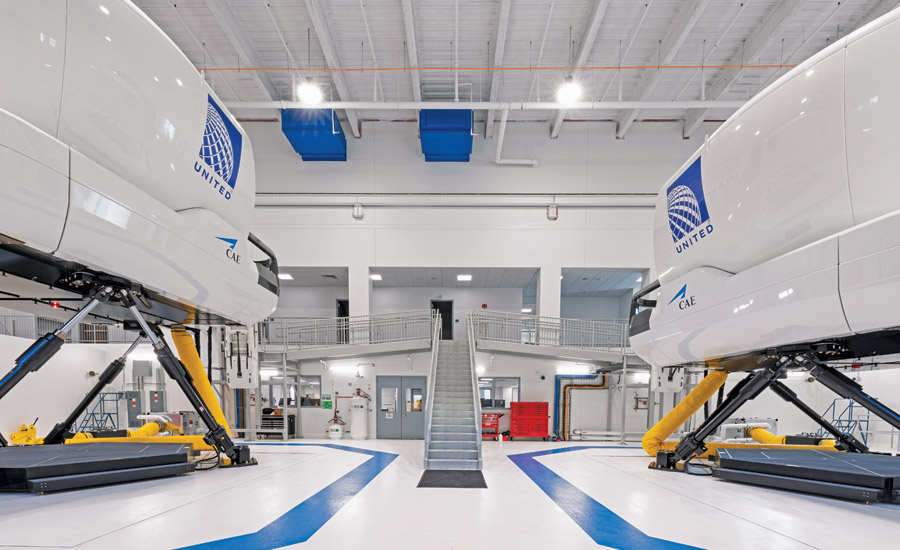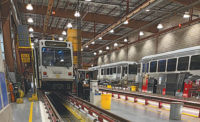ENR 2024 Mountain States Best Projects
Best Project, Airport/Transit: United Airlines Flight Training Center, Building H

Photo courtesy Small Giants Marketing Agency
United Airlines Flight Training Center, Building H
Denver
BEST PROJECT
Submitted by: Turner Construction Co.
Owner: United Airlines
Lead Design Firm/MEP: BRPH
General Contractor: Turner Construction Co.
Civil/Structural Engineer: HCL
Acoustics: AES Acoustics
Telcom/AV/Security: TDSi
LEED Administrator: Working Buildings
Subcontractors: Drake-Williams Steel; Encore Electric; Murphy.; E&K Cos.
To meet United Airline’s growing demand for pilot training, this $122.9-million flight training center was designed and built in just 16 months. The new Building H includes 12 full flight simulator (FFS) bays, 12 fixed training devices, offices, conference rooms, a training room space as well as a pedestrian bridge connecting the facility to the existing campus.
Despite the aggressive scope and schedule, compounded by permitting timelines and market volatility, the project team’s primary directive was the on-time delivery of the first two simulator bays, with a fixed completion date for the two bays of May 2023.
Initially, the project was envisioned as a smaller-scale addition to an existing building on United’s Quebec Street campus, but with the need for more than just two additional FFS and other spaces, the contractor presented various project scenarios to address the client’s short- and long-term requirements. This expanded the project scope to its final iteration. But combined with site constraints and the tight schedule, the team had to rethink its conventional approach to the simulator building.

Photo courtesy Small Giants Marketing Agency
A phased permitting and occupancy strategy ensured the two initial simulator bays could be turned over while construction continued on the larger facility. This required constructing a building within the larger building, complete with its own rated separations, egress, utilities and dedicated life safety systems. Significant use of prefabrication allowed key components to be produced off site in a controlled environment, reducing worker exposure to potential hazards and site congestion while allowing for more precise and efficient installations.
In collaboration with simulator manufacturer CAE, the team refined facility requirements, optimized mechanical systems and configured equipment to support operational efficiencies. Nearly every aspect of the design was influenced by the schedule objective and the need for early turnover. Crews also had to navigate existing conditions and unprecedented severe weather, but despite these challenges, the team delivered the training center on time and within budget in May 2024.



